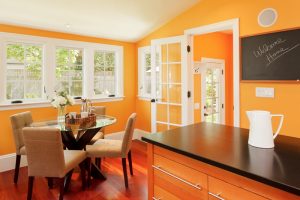 Do you worry about how much energy you use in your home throughout the year, and what the cost of that energy use is? This is understandable. It’s important to take a close look at energy expenditure in your home, but also that you know of ways to lower costs. This starts by working with professionals who will help you improve your home to lower those costs.
Do you worry about how much energy you use in your home throughout the year, and what the cost of that energy use is? This is understandable. It’s important to take a close look at energy expenditure in your home, but also that you know of ways to lower costs. This starts by working with professionals who will help you improve your home to lower those costs.
One method for lowering your home’s energy use, if you use a forced-air heating and cooling system (a furnace and standard central air conditioner, or a heat pump), is to integrate an Olympia, WA zone control system installation into your HVAC system.
What Is a Zone Control System?
This is a system that enables you to control which rooms in your home receive cooled or heated air, and which of them don’t. The standard central climate control system uses a blower fan to send conditioned air into the ductwork, which branches out to the various vents that open on the rooms.
However, this air goes to all the rooms, whether or not anyone is in the room to actually need the conditioned air. This would be akin to having every light in the house turn on when you flip a single light switch: it’s a waste of energy and just unnecessary.
How Does Zoned Cooling and Heating Work?
Our professional HVAC technicians will put in place two sets of components when installing a zone control system. The first is dampers, which fit into the ducts and can close off to seal airflow through a section of ducts to one of your vents. Our installers can put in as many dampers as you desire, depending on the number of zones you wish to divide your living space into. There can be as few as two, and as many as there are rooms in your home.
The second set of components is local thermostats. Each of the dampers has a thermostat that controls it directly. This thermostat is placed in the zone that the damper controls. The local thermostats are all connected to a central control panel, which can operate them all.
When your HVAC system receives a request for a temperature change from one of these local thermostats, it turns on and the dampers to the other zones seal up—that is, unless one of those zones is also receiving a request. Air flows only to the vents with open dampers.
When the thermostat registers that the set temperature is reached, it signals to the control panel to shut its damper, and also cycle down the HVAC system, unless there are other pending requests. When all requests are met, the system opens a vent in the return air ducts to help balance the pressure in your ventilation system, and then it shuts off.
Keeping Your Comfort in Mind
Please reach out to us to learn more about these systems and how they can help you maintain optimal comfort in your home. In addition to saving energy and lowering costs, a zone control system can actually improve relationships! That is, it can prevent family arguments over what temperature to have the house at.
Contact Sound Heating today! We take your comfort as serious as you do.
